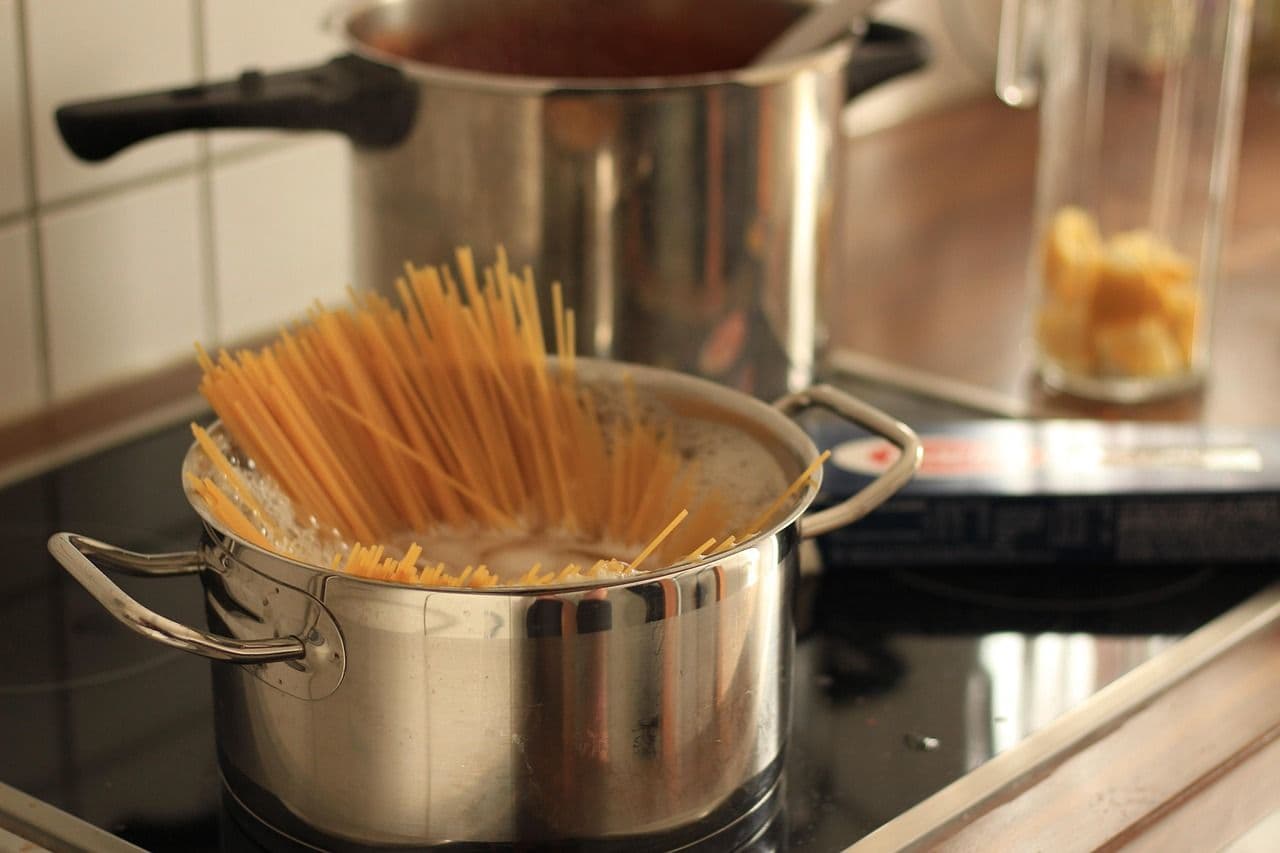Lifestyle
Scientists Reveal Optimal Salt Amount for Cooking Pasta

Cooking pasta may seem straightforward, but a recent study suggests that the right amount of salt can significantly enhance both flavor and texture. Researchers have determined that adding approximately 7 grams of salt per liter of water—equivalent to about 1.25 teaspoons—is essential for achieving the perfect pasta consistency. This finding, reported by City Magazin, challenges the common practice of simply adding a pinch of salt.
The research, conducted by scientists at the University of Lund, indicates that this specific salt concentration helps maintain the structural integrity of spaghetti during cooking. Dr. Andrea Skoti, a senior lecturer in physical chemistry, explained, “Cooking pasta with the right amount of salt is not just about taste; it influences the microstructure of the pasta, enhancing the overall dining experience.”
Scientific Insights into Pasta Cooking
Utilizing advanced techniques, including particle accelerators and neutron devices, the researchers examined how pasta transforms during the cooking process. Their study revealed that the ideal texture is achieved after approximately 10 minutes of boiling. The results were published in the scientific journal, Food Hydrocolloids.
According to Dr. Skoti, the gluten present in traditional spaghetti acts as a protective network that preserves starch. The study highlighted that gluten-free pasta exhibited the most significant structural damage when cooked for 13 minutes in highly salted water, while regular pasta displayed greater resilience and flexibility. These findings may pave the way for the development of improved gluten-free pasta options.
Additional Tips for Pasta Lovers
In addition to the salt recommendation, experts suggest allowing pasta to cool before consuming it. Nutritionist Kevin David Rayl explained that as pasta (or rice) cools, the starch molecules undergo a transformation into what is known as resistant starch. Unlike regular carbohydrates, resistant starch behaves like fiber, promoting slower digestion, providing steady energy release, and aiding in maintaining stable blood sugar levels.
This cooling method is also reportedly utilized by professional athletes, including football players, to sustain energy levels, enhance recovery, and better manage body weight.
As cooking techniques evolve and research continues, these insights may significantly alter how pasta is prepared in kitchens across the globe, making for not only a tastier meal but also a healthier one.
-

 Entertainment2 months ago
Entertainment2 months agoAnn Ming Reflects on ITV’s ‘I Fought the Law’ Drama
-

 Entertainment3 months ago
Entertainment3 months agoKate Garraway Sells £2 Million Home Amid Financial Struggles
-

 Health2 months ago
Health2 months agoKatie Price Faces New Health Concerns After Cancer Symptoms Resurface
-

 Entertainment2 months ago
Entertainment2 months agoCoronation Street’s Carl Webster Faces Trouble with New Affairs
-

 Entertainment2 months ago
Entertainment2 months agoWhere is Tinder Swindler Simon Leviev? Latest Updates Revealed
-

 Entertainment3 months ago
Entertainment3 months agoKim Cattrall Posts Cryptic Message After HBO’s Sequel Cancellation
-

 Science4 weeks ago
Science4 weeks agoBrian Cox Addresses Claims of Alien Probe in 3I/ATLAS Discovery
-

 Entertainment2 months ago
Entertainment2 months agoOlivia Attwood Opens Up About Fallout with Former Best Friend
-

 Entertainment3 months ago
Entertainment3 months agoMarkiplier Addresses AI Controversy During Livestream Response
-

 Entertainment3 months ago
Entertainment3 months agoMasterChef Faces Turmoil as Tom Kerridge Withdraws from Hosting Role
-

 Entertainment4 months ago
Entertainment4 months agoSpeculation Surrounds Home and Away as Cast Departures Mount
-

 World2 months ago
World2 months agoCole Palmer’s Mysterious Message to Kobbie Mainoo Sparks Speculation










